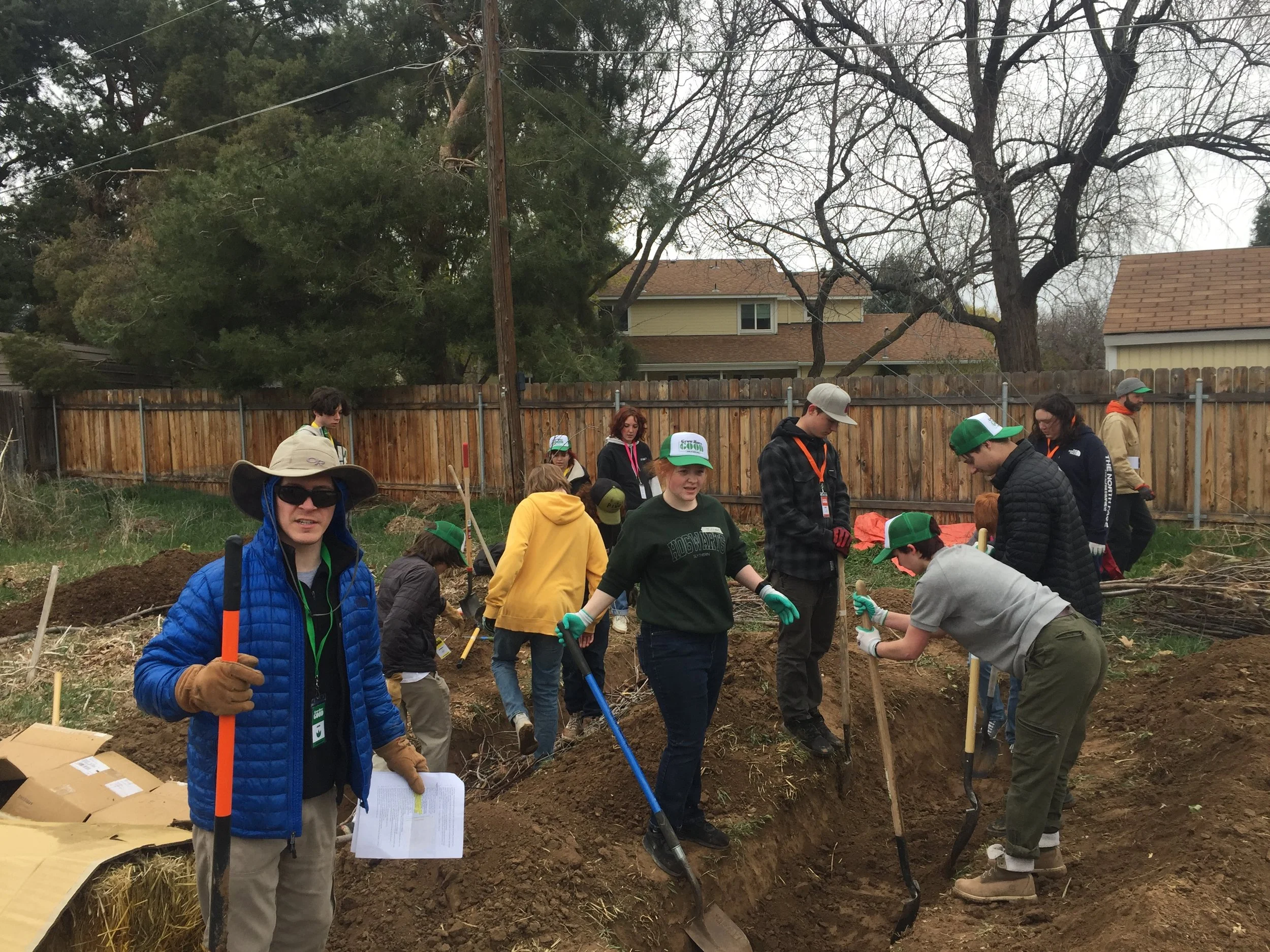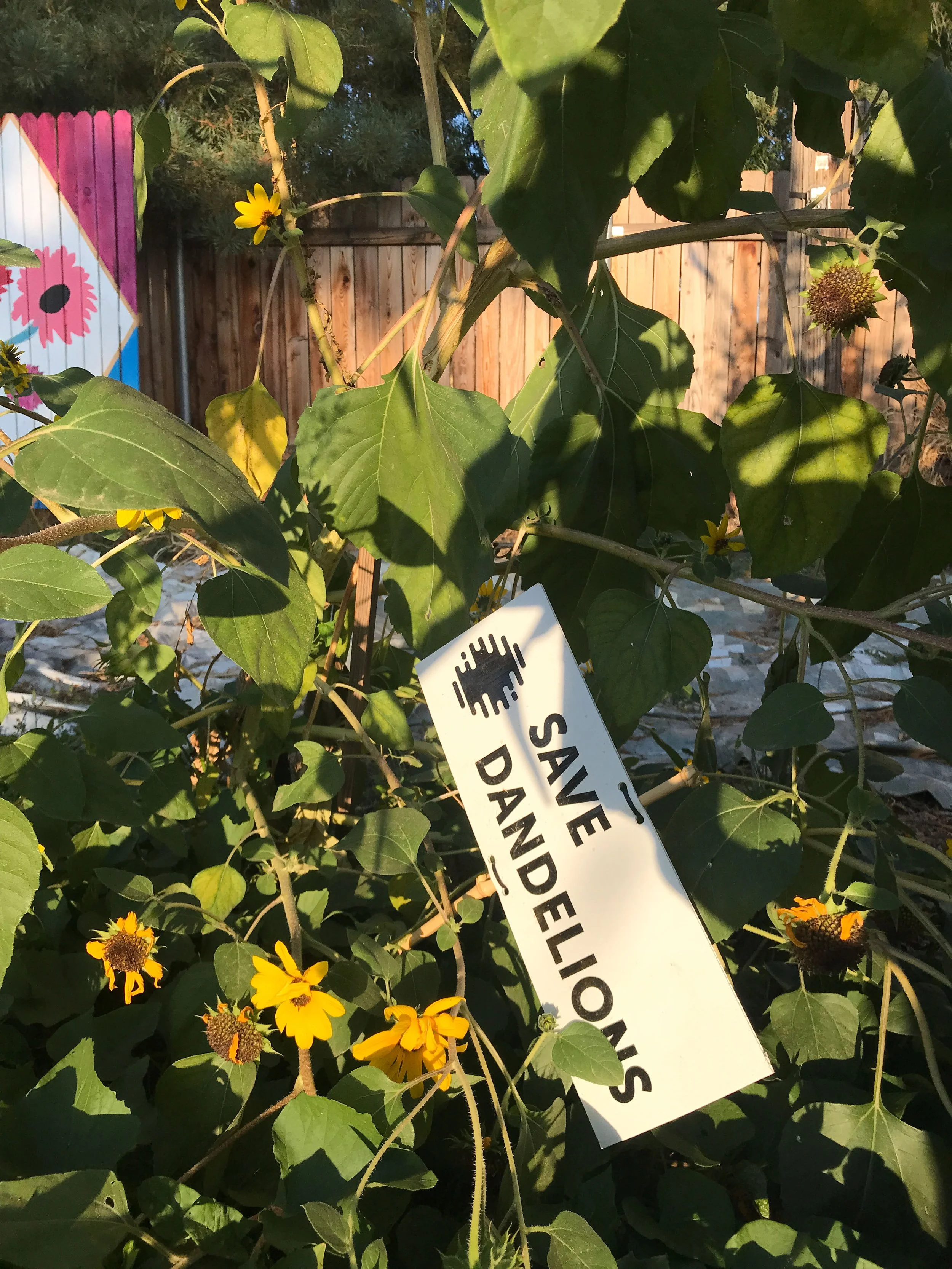10 Garden Preparation Tips
By Seth Tanner - Boise State University
Thanks to Margaret Lauterbach—Home & Garden Columnist for the Idaho Statesman for decades and author of Gardening in the Treasure Valley—for her seasoned insights.
With spring rapidly approaching, we would like to share 10 tips to prepare and maximize all gardens throughout the valley.
Digging hugel rows with One Stone students, coaches, and parents on Do Good Day at the Grow More Good Garden, 2022.
Midsummer - Grow More Good Garden
Our growing season varies from year to year, but May 10th to October 10th are usually considered as the average dates of first and last frost. The valley is in different USDA growing zones, generally 7 in the low-lying areas, 6 in the foothills. These zones refer only to the lowest expected temperature in winter, zone 7 meaning to 0 degrees, zone 6 to minus 10 degrees Fahrenheit. It’s quite possible to grow plants rated to higher zones than zones 7, if you find a place in your yard that is sheltered from frost and wind.
Organic gardeners feed the soil, so that the soil will feed the plant. The plant derives its food from the mycorrhizae in the soil, but by feeding the soil, one feeds mycorrhizae, and prolongs the soil’s fertility and ability to feed plants. Mycorrhizae are fungal growths in symbiotic relationships with plant roots, converting food for their uptake. Avoid reliance on synthetic fertilizers because as they feed the plant, they also build up salts in the soil, which can eventually turn toxic to plant growth.
If you see insects, consider whether they’re doing substantial damage. If they are, identify them accurately. Find out their life cycle and when they’re most vulnerable. Can other insects control them for you? Is there a nontoxic control available? If so, does the control have to contact the insects? Some examples of nontoxic controls for pests are blasting water on the undersides of leaves to knock them to the ground, concocting garlic spray to apply in the evenings until the issue is resolved and introducing ladybugs to your garden.
Plan your landscape to attract beneficial insects, which will control the bad guys. Plants that are nectar-rich, featuring umbelliferous (umbrella shaped) blossoms attract and feed beneficial insects, from bees to tiny wasps. Dill, parsley, even dandelions work.
Since our climate is normally dry, we seldom have plant diseases common in more humid climates. If your watering system wets foliage, water early in the morning so leaves can dry before a cool evening or consider transitioning to a watering system that only targets the base and surrounding soil of plants.
Organic gardeners feed the soil, so that the soil will feed the plant. The plant derives its food from the mycorrhizae in the soil, but by feeding the soil, one feeds mycorrhizae, and prolongs the soil’s fertility and ability to feed plants. Mycorrhizae are fungal growths in symbiotic relationships with plant roots, converting food for their uptake. Avoid reliance on synthetic fertilizers because as they feed the plant, they also build up salts in the soil, which can eventually turn toxic to plant growth.
If a little fertilizer is good for a plant, please don’t think a lot of fertilizer will be better. It’s usually much worse. Compost is sufficient for most plants and will likely supplant the need for fertilizer.
Never try to loosen clay soil with sand unless you have expert advice on the proper percentage of sand. It’s very easy to turn clay soil into adobe, useful for building houses but not for a growing medium.
South of the Boise River, there’s likely a hardpan, called caliche (calcium carbonate) that’s whitish and cement-hard, lying parallel to the surface of your soil, at some depth. Depths vary depending on your location in the valley. Before planting tap-rooted trees, dig down and break up the caliche into gravel or replace it with organic matter.
Unless your soil has been analyzed and found to be acidic (very few in this area are), do not put lime or fireplace ashes on your soil as these will raise the pH. Most plants common in Treasure Valley gardens will do well in a soil that is slightly acidic and will not require intense pH amendments unless the soil is found to be below 5.8pH. To safely lower the pH of alkaline soil, which is most common in the Treasure Valley, consider adding a large amount of organic matter or peat moss.

